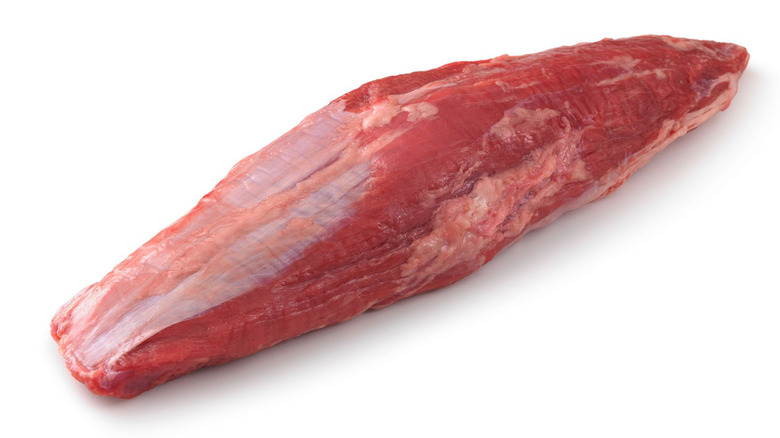Why You Should Be Using Shoulder Tender For Delicious Roast Beef
As one of the largest animals consumed, cows offer countless cuts to choose from, and many of them are great options for roast beef. While cuts from the rump or backside of the cow are traditionally used for making roast beef, shoulder tender is the lesser-known cut you should be using for the richest, most succulent results.
Tasting Table consulted the expertise of David Rose, a Food Network star and Executive Chef for Omaha Steaks, regarding the best cuts of meat for roast beef. Shoulder tender was high on his list of flavorful, soft cuts that will fit a tight budget. Also known as shoulder petite tender, the shoulder tender comes from the teres major muscle, the smallest muscle in the cow's shoulder. It's known as a lean, juicy cut that Chef Rose asserts is "comparable to a filet in flavor and texture but at about half the price."
A fancy roast beef dish is prized for its luscious slices with a pinkish red center. As a filet mignon and tenderloin doppelganger, the shoulder tender is typically cooked rare to medium-rare, which is ideal for restaurant-worthy roast beef. In fact, Rose says that "the trick to keeping this cut juicy and tender is avoiding overcooking it." Shoulder tender is harder to find packaged or pre-cut because it requires a skilled butcher to isolate it from the surrounding shoulder muscles. So, you'll have to request the cut at your local butcher.
Best way to make roast beef from the shoulder tender
Since Chef Rose stressed the importance of avoiding overcooking a shoulder tender, cooking times will be quick. While larger cuts with a lot of connective tissue are often used to make roast beef using a low-and-slow cooking method, you should treat the shoulder tender like a filet mignon. You can use the whole shoulder cut for a roast beef recipe that starts with a quick sear to create a nicely browned exterior. Then, transfer the searing pan to the oven for a quick 10 to 12 minute roast at around 425 degrees Fahrenheit.
As a lean but juicy cut, the shoulder tender doesn't need an elaborate marinade. Plus, its intense beefy, umami flavor needs little more than a basic seasoning. That said, you can impart notes from fresh herbs and aromatics into the shoulder as it rests for half an hour on the counter. Tasting Table's guidelines on how to make a tenderloin beef roast recommend pressing rosemary, thyme sprigs, and shaved garlic over the salt-crusted cut as it rests. You can also enrich the searing fat; using a compound butter full of garlic and fresh herbs will upgrade your roast beef's complexity. You can always pair your roast beef with rich creamy sauces to impart more flavor and moisture too. Horseradish cream, fresh chimichurri, and a tangy spicy mustard sauce would all be delicious, robust complements to a shoulder tender beef roast.

